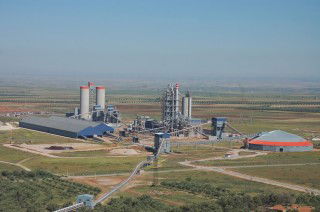Sluggish cement demand and oversupply have led to slow sales and low prices in South Africa. The cement sector’s low profit margins have not deterred new entrants with state-of-the-art plants providing plenty of competition for existing players despite lower imports. However, after this perfect storm, a new landscape is emerging. By ICR Research, UK and Electus, South Africa.
South Africa’s economic growth in 2017 is expected to be marginal at just 0.8 per cent, according to IMF estimates. However, the start of the year has seen better-than-expected inflation figures and a strengthening rand. This improved outlook encouraged Pravin Gordhan, the country’s former finance minister, to forecast 1.3 per cent GDP growth in 2018 – an upgrade on the 0.5 per cent growth seen in 2016. A slight improvement to two per cent is expected by the government for 2018. However, further improvement is needed if South Africa is to reduce its unemployment and meet National Development Plan targets, which were left behind. The situation led President Zuma to sack Mr Gordhan and his deputy Mcebisi Jonas in March 2017. The dismissal has had significant effects on South Africa’s credit rating. Upon this news, Standard & Poor downgraded the country’s credit rating to ‘junk’ status, meaning non-investment grade. The credit agency reported that it will now cost South Africa more to borrow money from global markets to finance its widening budget deficit. Moreover, South Africa’s new finance minister, Malusi Gigaba, has little notable finance experience, reported Deutsche Welle.
In addition, opposition is mounting against President Zuma, who has been in power since 2009 as leader of the ruling African National Congress party. There have been increasing calls for his resignation because of the country’s economic woes. While opposition protests on and off South African streets have multiplied, the leader of the United Democratic Movement, Bantu Holomisa, has stressed that the country needs to look for a new vision and that the protests will not bring about changes to the domestic political and economic system.
